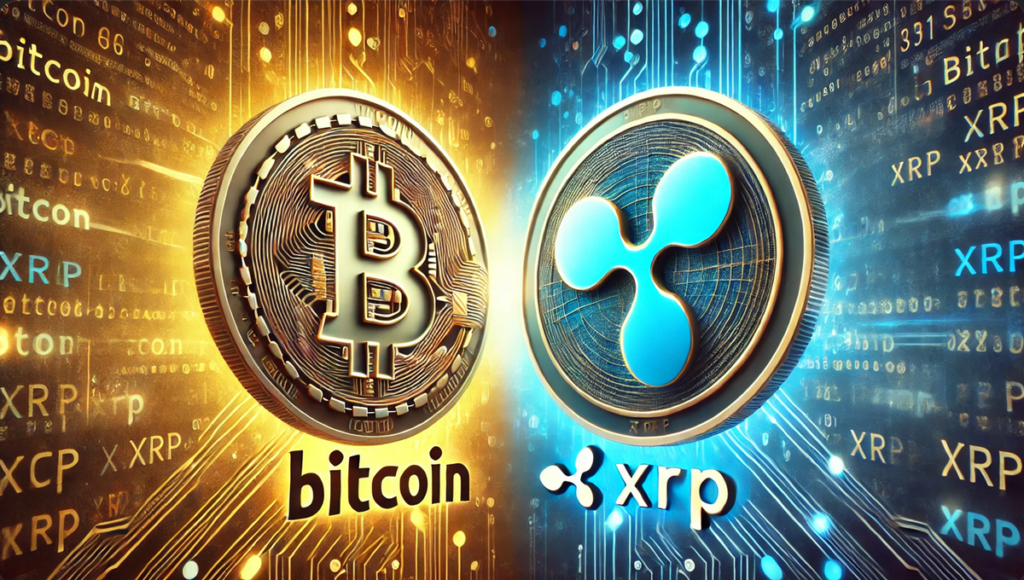
In the ongoing debate about cryptocurrency’s future, Ripple has once again found itself at the center of a controversy. Brad Garlinghouse, Ripple’s outspoken CEO, has issued a sharp rebuttal to claims that the company’s growing influence could pose a significant challenge to Bitcoin’s status as the preferred reserve currency of the crypto world.
The Debate Over a Bitcoin Reserve
Bitcoin, often heralded as digital gold, has long been positioned as the ultimate store of value in the cryptocurrency ecosystem. Its decentralized nature, fixed supply, and first-mover advantage have solidified its reputation as the de facto reserve asset. However, critics argue that Bitcoin’s high energy consumption, slower transaction speeds, and lack of programmability leave room for other contenders to challenge its dominance.
Ripple, with its XRP token, has emerged as a leading alternative, especially for cross-border payments. Its faster transaction speeds, lower costs, and focus on working within regulatory frameworks have made it attractive to financial institutions. This progress has sparked concerns among Bitcoin maximalists that Ripple’s increasing adoption could undermine Bitcoin’s position as the ultimate crypto reserve.
Garlinghouse Responds
In a recent interview, Garlinghouse dismissed these claims, arguing that Ripple and Bitcoin serve entirely different purposes within the crypto ecosystem.
“Comparing XRP to Bitcoin is like comparing apples to oranges,” he said. “Bitcoin is a fantastic store of value, but it was never designed for efficient payments. XRP, on the other hand, was built specifically to solve inefficiencies in the financial system. There’s room for both to coexist.”
Garlinghouse went on to criticize the tribalism often seen in the crypto space, calling it counterproductive to the industry’s broader goals. “We’re not competing with Bitcoin; we’re complementing it. The idea that XRP’s success somehow threatens Bitcoin is a false narrative,” he added.
The Bigger Picture
Despite Garlinghouse’s assurances, the debate highlights a broader issue in the crypto world: the tension between decentralization and institutional adoption. Bitcoin’s rise as a reserve asset is rooted in its decentralization and censorship resistance. Ripple, on the other hand, has faced criticism for its perceived centralization and close ties to traditional financial institutions.
This philosophical divide raises questions about what the future reserve currency of the crypto ecosystem should look like. Should it prioritize decentralization and trustlessness, as Bitcoin does? Or should it focus on efficiency and integration with existing systems, as Ripple aims to do?
The Path Forward
For now, Bitcoin remains the dominant reserve asset, with institutional players like MicroStrategy, Tesla, and others holding significant amounts on their balance sheets. However, Ripple’s progress in the payments sector and its recent legal victories over the SEC have strengthened its position as a major player in the crypto space.
Garlinghouse’s rebuttal underscores the need for the industry to move beyond zero-sum thinking. As crypto adoption continues to grow, it’s increasingly likely that multiple assets will play key roles in the global financial system, each serving unique purposes.
Whether Bitcoin maintains its status as the ultimate reserve asset or shares the stage with alternatives like Ripple remains to be seen. What’s clear is that the crypto space is evolving rapidly, and the dynamics between different players will continue to shape its future.
Final Thoughts
The clash between Ripple and Bitcoin enthusiasts reflects the diversity of thought within the crypto community. While debates are healthy and necessary, Garlinghouse’s call for collaboration rather than competition could pave the way for a more inclusive and robust ecosystem. As the industry matures, perhaps it’s time to recognize that the future of finance isn’t about one coin ruling them all but about finding the right tools for the right tasks.





